Virtualization technology provider VMware acquired CloudHealth in August 2018. VMware hoped the new addition would enable more organizations to manage services on other cloud platforms like AWS, Azure, and their private data centers.
So, what does CloudHealth do and how much does it cost? Is it a good all-in-one platform for cloud management?
This guide explores CloudHealth pricing, features, and possible alternatives to help you decide if the solution is right for you (or if there is a better option).
Table Of Contents
What Does CloudHealth Do?
CloudHealth by VMware is a multi-cloud management solution for enterprises that want to govern and optimize their VMware Cloud, Amazon Web Services (AWS), Microsoft Azure Cloud, Google Cloud Platform, Oracle Cloud Infrastructure, and data center operations.
With CloudHealth, organizations can simplify hybrid cloud financial management, optimize operations, and facilitate coordination across multiple cloud environments.
It also serves as a cloud security and compliance platform. This aims to help businesses to monitor and detect any issues that could lead to performance, cost, or other problems in their environments.
What Features Does CloudHealth Offer?
CloudHealth’s cloud management components enable technology administrators to visualize, measure, optimize, and automate cloud resources and infrastructure.
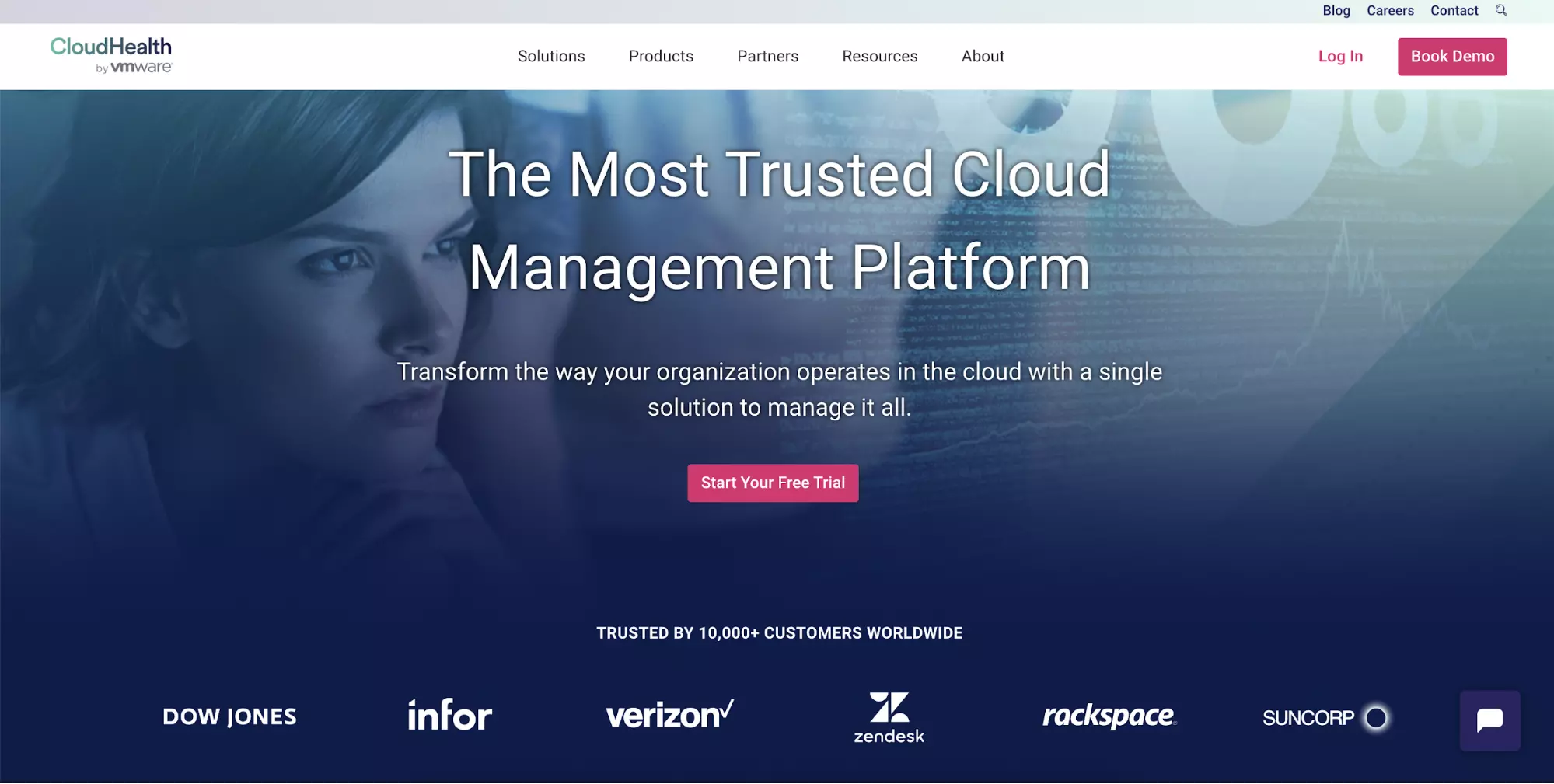
CloudHealth includes features for cloud resource usage reporting, security and compliance management, as well as cloud cost management.
The company offers two platform types, one for managed service providers (MSPs) and the other for businesses. The MSP Partner Platform streamlines customer management, ensures granular billing, and enhances profitability through resource visibility and optimization.
Cloud data organization and management
CloudHealth ingests large amounts of data from multiple clouds and integrations. It then consolidates that data into one place, enabling easier analysis and decision-making. This empowers IT administrators to visualize their environment’s resource utilization, performance, security, compliance, and other usage information.
Cloud reporting and analysis
You can create custom dashboards and reports to visualize, analyze, and report on the health of your cloud and data center systems. CloudHealth FlexReports offers several ways to visualize the data, such as by business department or end-user:
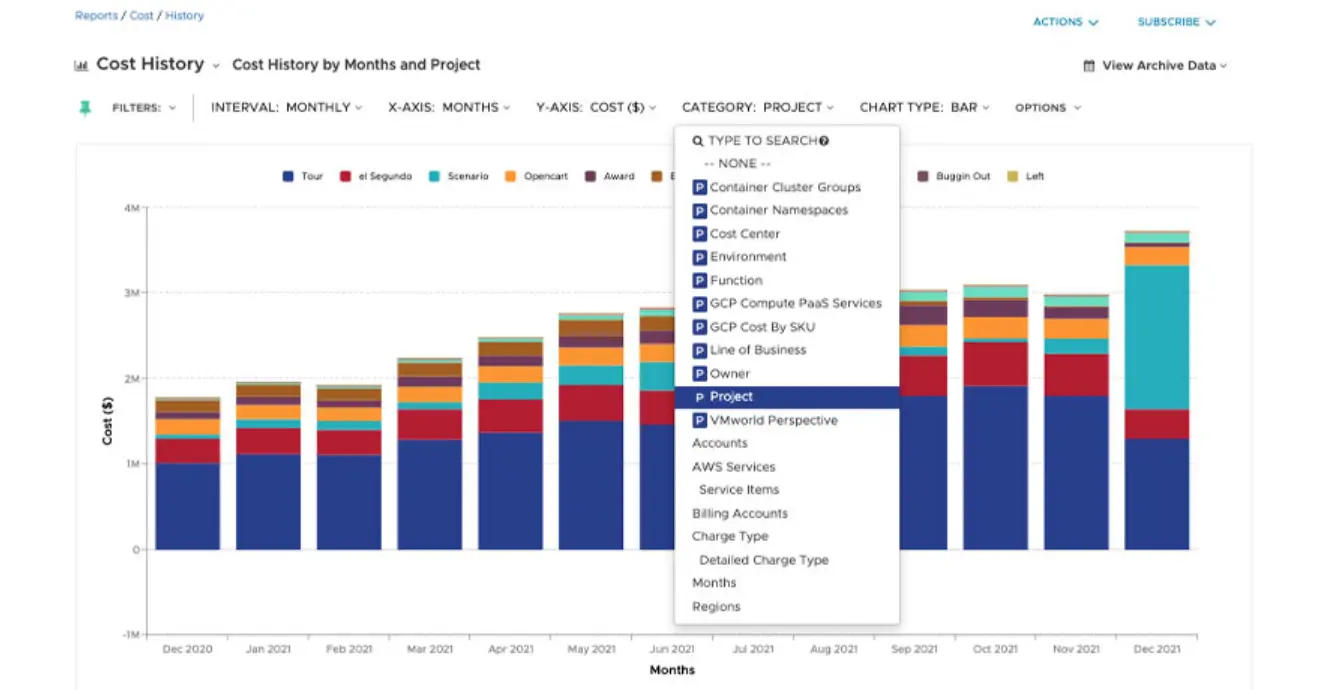
Security and compliance
The service provides a real-time and unified view of public cloud risks across multiple accounts, providers, and regions. You can identify misconfigurations that lead to poor performance, anomalies that can cause data breaches, and other security postures. The service also includes Kubernetes and container security management, as well as continuous compliance prioritization.
Cloud resource utilization and cost management
Not only does CloudHealth visualize resource consumption data, but it also presents associated costs. This lets you compare actual performance with your provisioned capacity, empowering you to identify assets you can downsize, pause, or terminate to reduce costs.
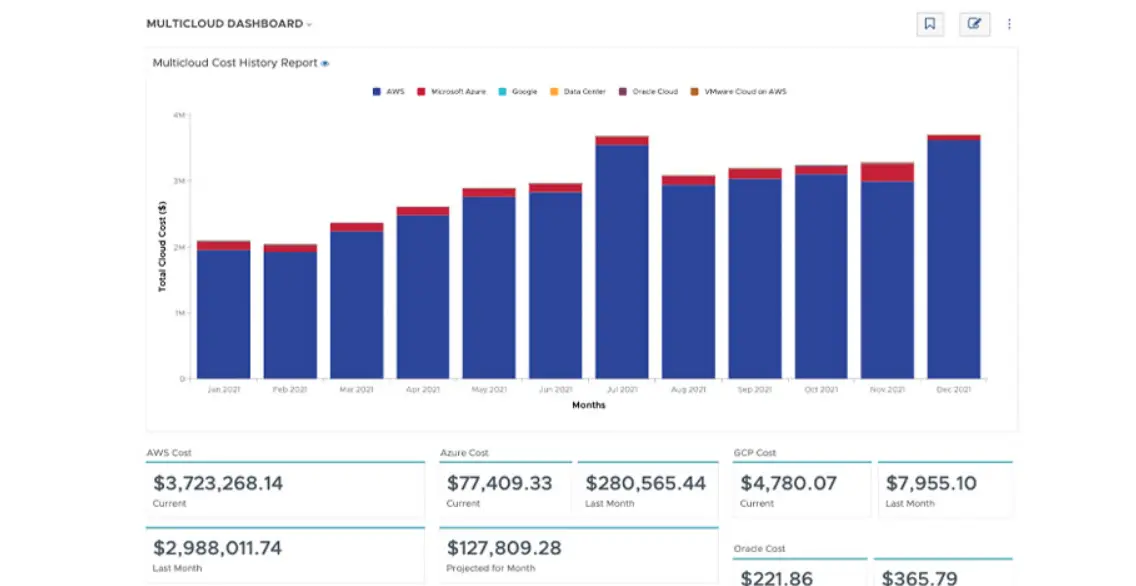
Also, CloudHealth provides cloud optimization recommendations based on custom thresholds to help optimally size PaaS and IaaS resources in multi-cloud environments.
Anomaly detection
Anomaly Detection (in beta mode) is designed to help organizations detect, view, and analyze historical changes in cloud spending. You can then sort and view data by various criteria, including account, region, date, and service.
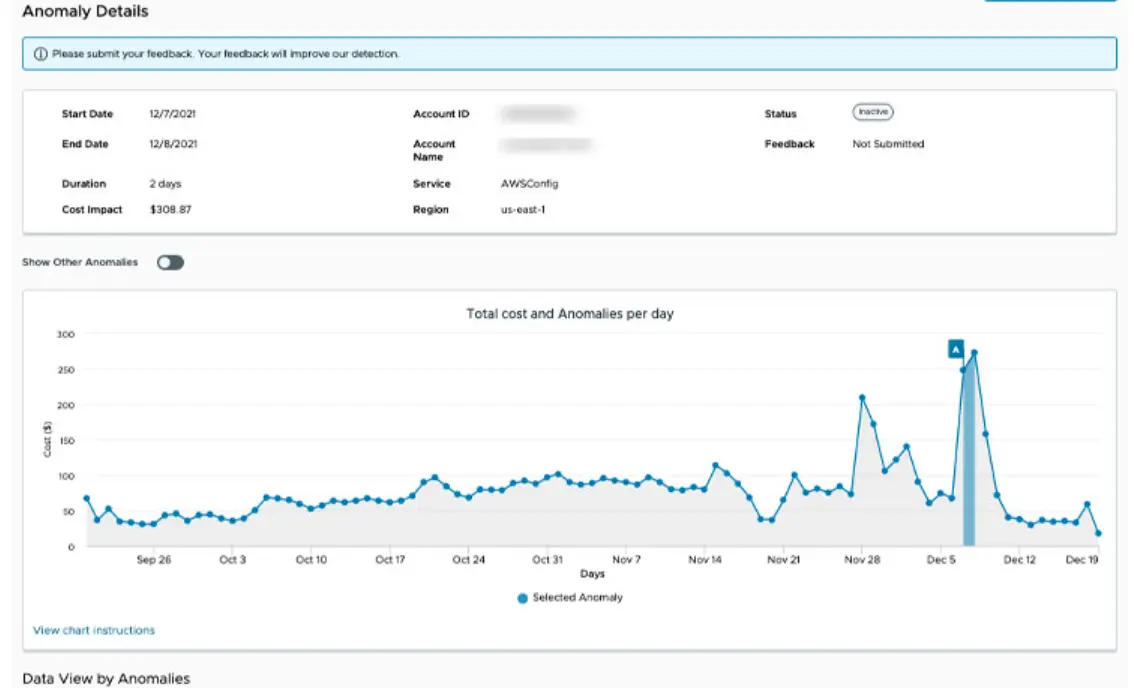
There’s more.
Besides cloud management, CloudHealth also offers tools for cloud migration. For example, it can help you determine the total cost of ownership of a cloud deployment. As a result, you can start moving workloads to the cloud according to their dependencies.
CloudHealth also works with a broad range of integrations and cloud computing tools, such as:
- Ansible
- Alert Logic
- Datadog
- Chef
- Kubernetes
- Docker
- PagerDuty
- Puppet
- New Relic, and more.
CloudHealth Pricing: How Much Does CloudHealth Cost?
CloudHealth’s pricing is subscription-based. However, they do not provide pricing on their website. Still, the CloudHealth price model on AWS Marketplace may provide some clues.
As of June 2022, CloudHealth for AWS costs a flat fee for AWS spending up to $100,000, then 3% of your monthly spend. There is no upfront payment required, but a $1,000 minimum fee applies.
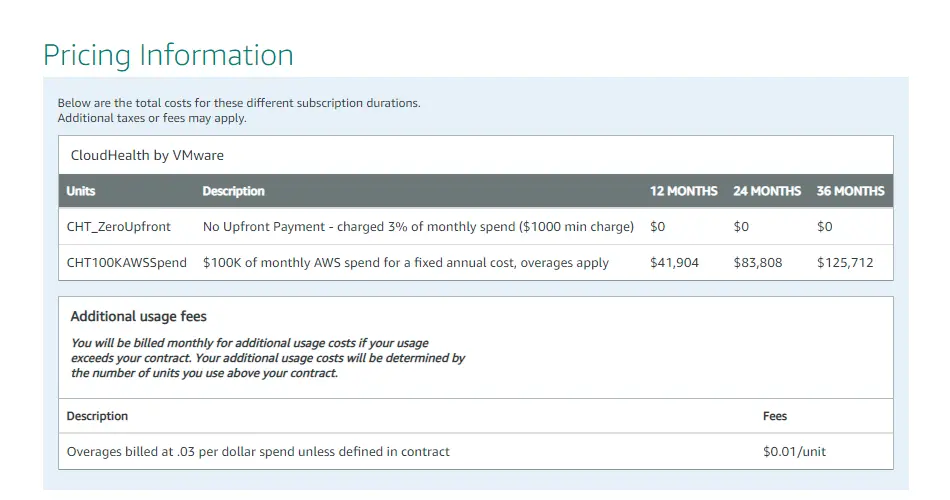
Credit: AWS Marketplace
For AWS spending over $100,000, CloudHealth charges a fixed annual cost of $41,904 (12 months), $83,808 (24 months), and $125,712 (36 months), according to AWS Marketplace.
Additional usage fees apply monthly if you go over your contractual usage terms. These overages cost $0.03 per dollar spent unless defined in your contract with the platform.
CloudHealth Secure State and customer support, including onboarding support, costs $13,800 (12 months) and $39,060 (24 months) for 100 cloud resources each month.
Is There a Better CloudHealth Alternative?
Here’s the deal. CloudHealth seeks to help customers focus on governance in the cloud through cloud financial management, security governance, and compliance monitoring.
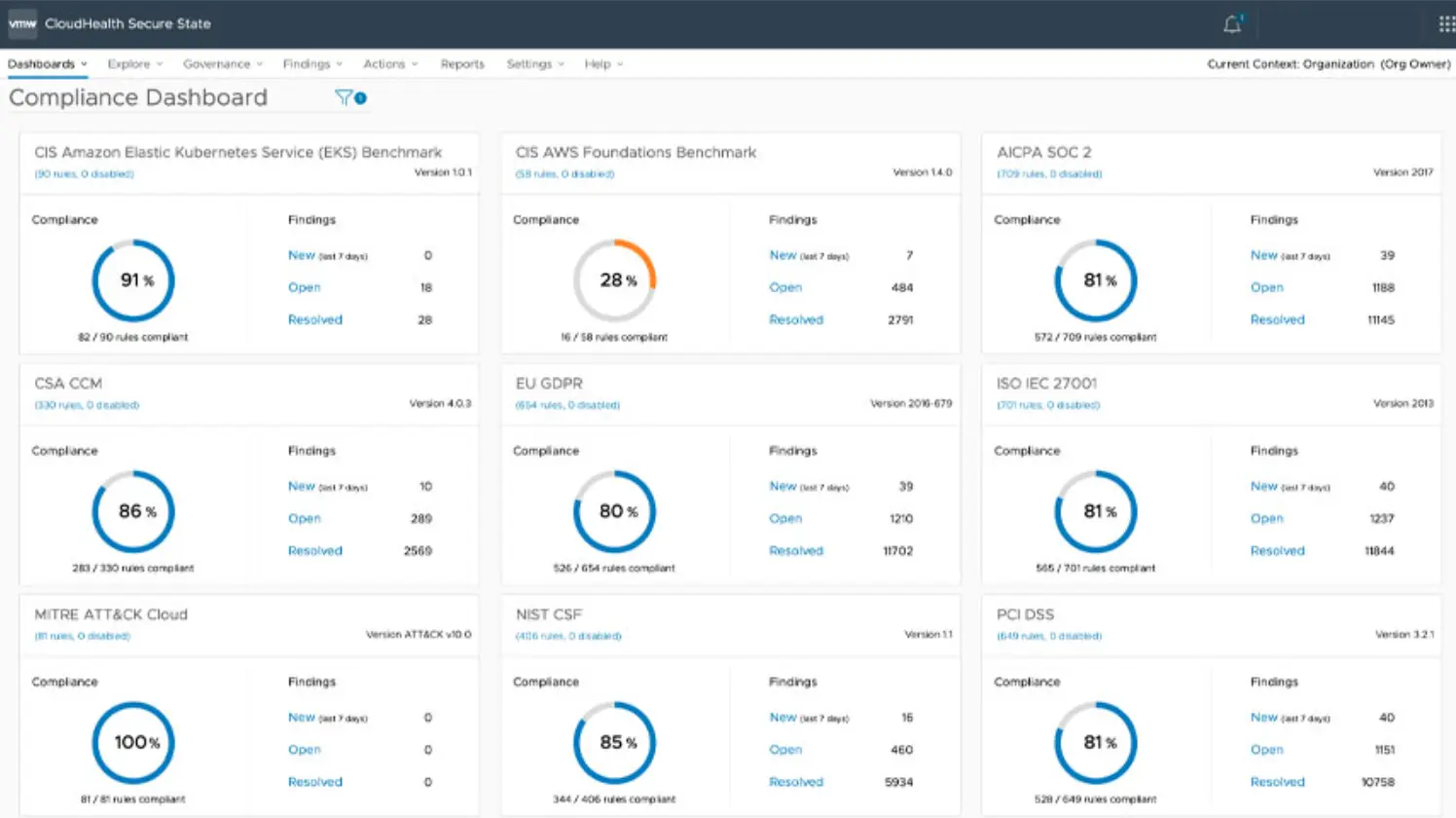
The platform also markets itself to companies and enterprises that require a hybrid-cloud and multi-cloud solution. For example, it can help you consolidate Azure, AWS, Oracle, data center, and GCP cloud data and analyze it in one place.
Yet, CloudHealth takes a traditional cloud cost management approach:
- Manage discount programs like AWS Savings Plans and Reserved Instances (RI)
- Get rightsizing recommendations
- Use custom policies to automate cloud operations, such as terminating unused resources
- Get high-level reporting on various cost centers, such as the total cost or average cost per month for a business unit
- Track cloud costs against a budget, alerting stakeholders when cost overruns are apparent
- Monitor your security posture and compliance.
However, CloudHealth, like AWS Cost Explorer, heavily relies on tags. It follows that you must have excellent tags to capture your cloud costs. If you don’t, you’ll get inaccurate or incomplete cost data. For most companies, creating a perfect tagging strategy is a tall order.
Also, because it only provides an overview of costs, such as average cost per customer, you may have difficulty accessing cost per item data. After all, average costs do not reflect the true cost of individual items.
The Alternative: Modern, Granular Cloud Cost Intelligence
Contrary, CloudZero’s platform offers granular and instantly actionable cost insight by accurately mapping cost telemetry to the specific people, processes, and product features that generate them.
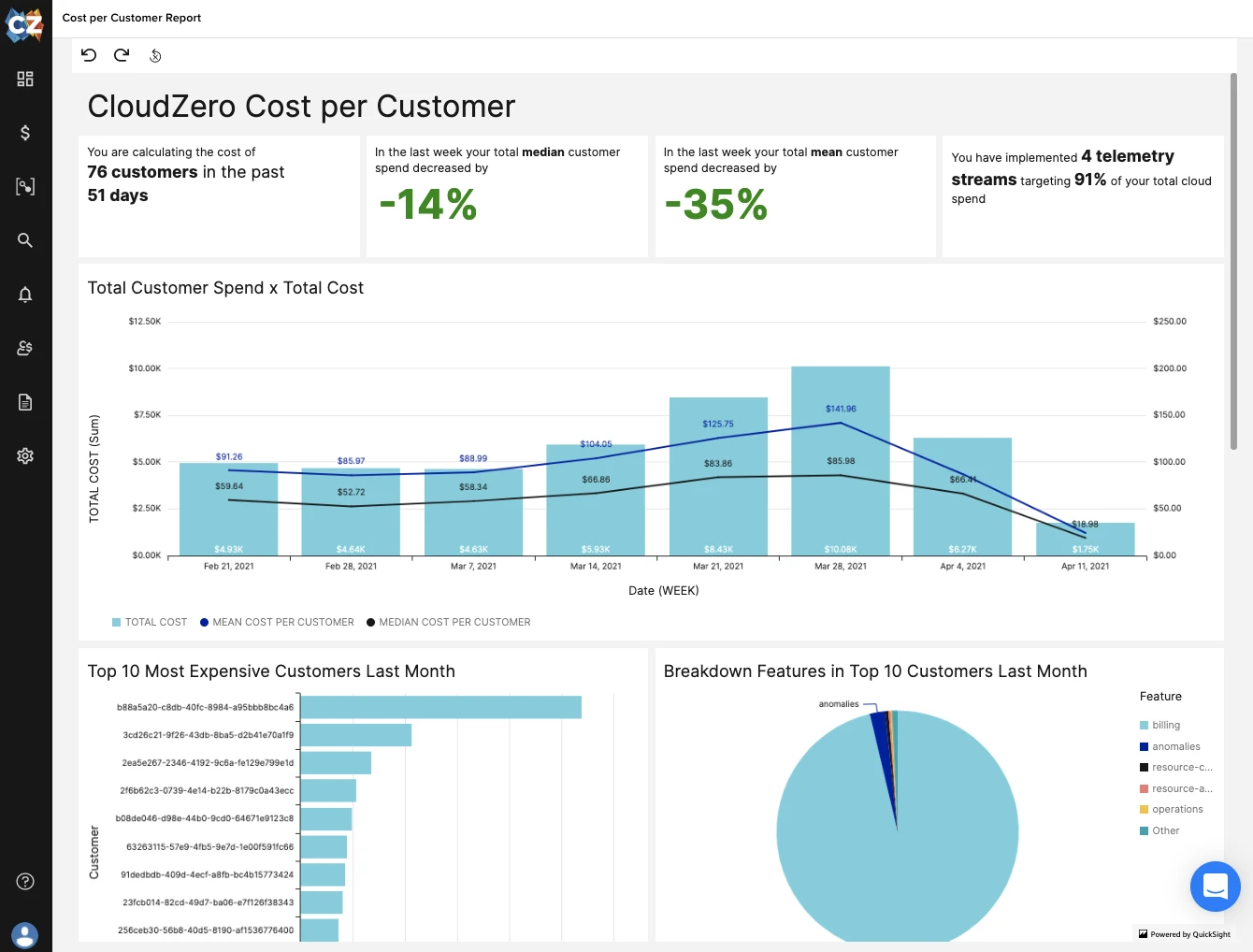
So, you can determine at any time who, what, and why your cloud costs are changing. This means you can pinpoint which areas to optimize costs without negatively impacting service delivery.
With CloudZero, you get:
- Unit cost analysis (cloud unit economics) – View cost per customer, cost per tenant, cost per product, cost per product feature, cost per team, cost per project, and more.
- No tagging required – Unlike other cloud cost management tools, CloudZero’s data model combines code-driven, telemetry-driven, and tag-based cost allocation to provide cost insight into tagged, untagged, untaggable, and shared resources in multi-tenant environments, even if you have messy AWS tags.
- Engineering-friendly approach – Empower your engineers with insights such as cost per feature, cost per deployment, and cost per environment so they can optimize costs at the architectural/infrastructure level.
In the image below, the vertical black bars represent deployments and the blue background, cost fluctuations. Below that is a more detailed cost breakdown.
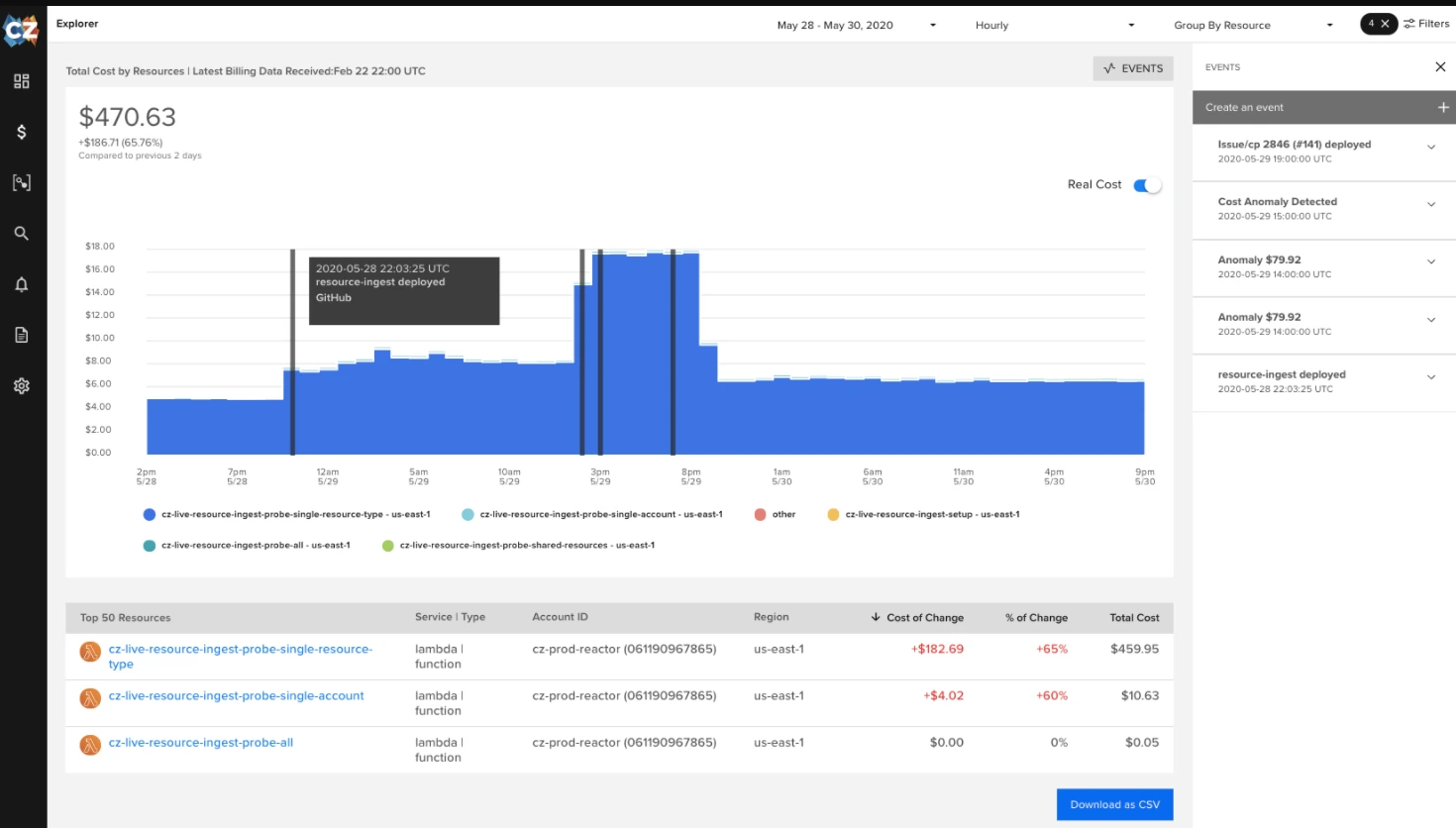
Your engineers also get timely cost anomaly alerts in Slack to help tm spot potential cost issues so they can take action and prevent overspending.
- Consolidated Kubernetes cost intelligence – Align, track, and measure Kubernetes and non-Kubernetes spend in one place. Yet, be able to zoom into Kubernetes costs down to the hour and pod levels.
- Multi-service costs in one place – For a complete picture of your cloud costs, CloudZero empowers you to view AWS, Kubernetes, and Snowflake cost data in a single platform. Also view your cost of goods sold (COGS) for finance teams, CFO or C-Suite, the board, and investors.
- Discounts program dashboard – Organize all your discount tools, including Savings Plans, Reserved Instances, and Spot Instances in one place to help you maximize savings and minimize commitment risk.
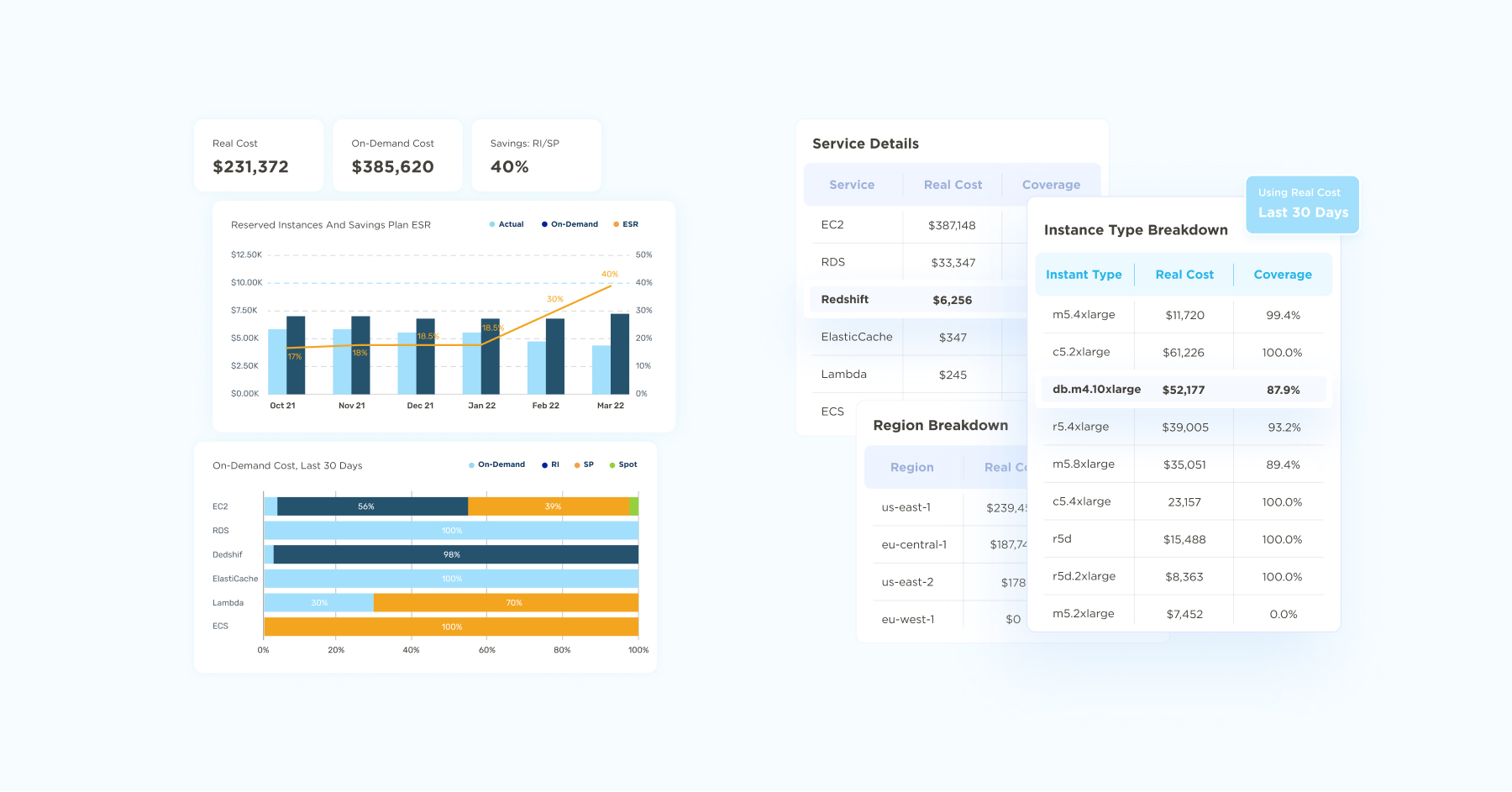
With ProsperOps and Xosphere, CloudZero’s partners, you can go beyond merely getting rightsizing and discount purchasing recommendations to automatically apply the best pricing for Savings Plans, Spot instances, and RIs continuously.
- Automated cost anomaly alerts – Real-time anomaly detection alerts your teams in Slack or by email as cost trends emerge so engineers can take action to prevent budget overruns.
Also, while CloudHealth has complex pricing, CloudZero pricing is tailored to your cloud environment. CloudZero does not charge on a percentage basis, no matter how much you spend. This means that the ROI and savings that CloudZero generates often covers its cost.
Moreover, while CloudHealth targets large enterprises, you can add CloudZero at any stage of your company’s development. With CloudZero, customers like Drift, Starchive, and Obsidian saved over $2 million, caught a cost anomaly that would’ve increased AWS bills by 1,600%, and reduced AWS costs by 25%, respectively.
 to see the power of CloudZero for yourself!
to see the power of CloudZero for yourself!
CloudHealth Frequently Asked Questions
Does CloudHealth offer a free demo?
Yes, CloudHealth offers a free demo, which you can request from its official website.
Does CloudHealth provide a free trial?
Yes. Free trials are available for CloudHealth, CloudHealth Partner Platform, and CloudHealth Secure State.
How much does CloudHealth cost?
CloudHealth charges customers annually based on usage.
What pricing tiers does CloudHealth offer?
Pricing is not tier-based. Contact CloudHealth for pricing.
Is CloudHealth suitable for small and medium businesses?
CloudHealth is primarily for large organizations with a sizable cloud budget.








